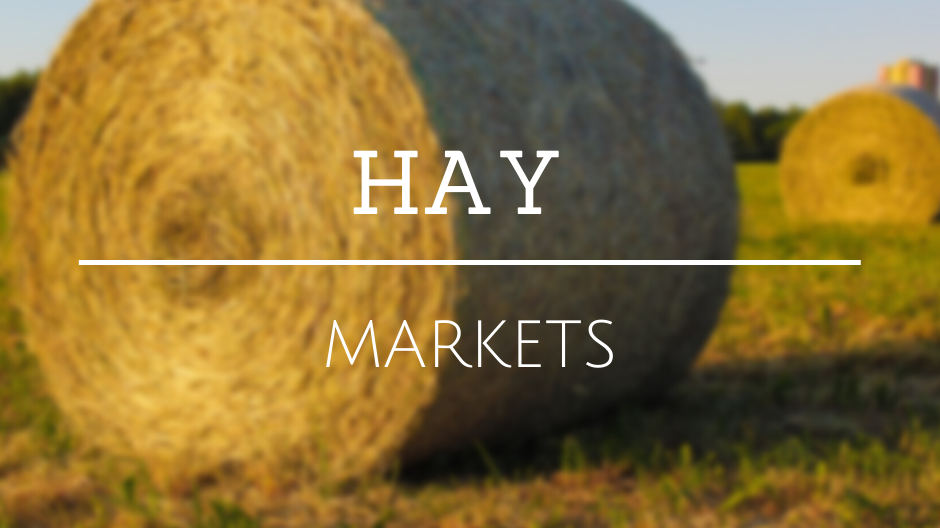Colorado—In the Dec. 7 report, compared to last report, trade activity light on moderate demand. The bulk of activity remains in the horse hay markets. Horse hay sold mostly steady.
Missouri—In the Dec. 7 report, compared to last report, hay movement and demand remain moderate, the supply of hay is light to moderate, and prices mostly steady. Despite several areas of the state getting light precipitation since last weekend, over 92 percent of the state is included on the drought monitor. Weather conditions have been warmer than what we usually see in December, but some frost has been seen in the morning before warming in the afternoons. A majority of cattle producers are feeding hay at this point.
Nebraska—In the Dec. 7 report, compared to last report, bales of alfalfa, grass hay and cornstalks sold steady. Dehydrated alfalfa pellets steady. Ground and delivered hay steady except in the west it sold steady to $5 lower. Demand was light to moderate. Unseasonal warm weather across the region has been in the livestock owners favor so far this fall. Livestock has been able to graze winter pasture or cornstalks with little to no extra supplementation.
Oklahoma—In the Dec. 8 report, compared to the last report, the hay trade is slow to steady. Oklahoma has seen more movement compared to the past week. With minimal hay trading, we still have a larger hay inventory than usual which has caused the hay movement to be slower than in years past. Next report will be released Dec. 22.
Texas—In the Dec. 1 report, compared to the last report, hay prices are mostly steady across the majority of the regions with quality and freight being the largest determinants on price. Trading activity was limited due the holiday last week. According to the Texas Crop and Weather report, extreme drought conditions continued to affect crop and pasture conditions in the region negatively. Any additional moisture from precipitation, including snow, will be highly beneficial for the early growth of cool-season small grain crops. Next report will be released Dec. 15.
South Dakota—In the Dec. 8 report, compared to last report, alfalfa hay steady. Moderate demand for alfalfa, good demand for high quality grass to start calves on feed with. Very mild weather, temps in the 40s and 50s, beef cows are turned out on stalk fields east river, winter pastures west river. This mild winter season, so far, is really helping to stretch hay supplies. Dairy operators continue to deal with low milk prices and aren’t pushing the hay market because of it. Corn stalk baling pretty much complete, as is corn harvest except for some areas in the northern part of the state are wrapping up now.
New Mexico—In the Nov. 24 report, compared to last report, alfalfa hay steady. Trade active, demand good. The the state is 73% complete with fifth cutting, 54% with sixth cutting. Most parts of the state are wrapping up harvest for the season. According to New Mexico Crop Progress report as of Nov. 12. Hay and roughage supplies improved slightly from the previous week but remained in worse condition than prior years. Hay and roughage supplies were observed to be 25% very short, 42% short, 30% adequate, and 3% surplus. At 14% very short, 37% short, 45% adequate, and 4% surplus, stock water supplies were on par with the 5-year average. This is the last report for the season, reports will resume in spring 2024.
Wyoming—In the Nov. 30 report, compared to last report, all reported hay sales sold steady. Demand was light for large square bales with good demand for small square bales. Some snow around the state with cold temperatures. Slight warm-up in the forecast for most areas of the state. Quite a lot of poorer or off quality hay across the region and every buyer knows it. But it is a long time till next summer when turn out occurs so demand might pick up for the cow type hay.
Montana—In the Dec. 8 report, compared to last report, hay sold fully steady. Hay sales were light this week. Rancher to rancher sales continue to comprise most of the hay sales across the state and are in direct competition with most of the larger hay producers. Many ranchers are selling at $150 delivered. Many larger hay producers are shipping hay out of the state with most hay shipping east into Minnesota, Iowa and Wisconsin. Demand for hay to ship north to Canada has lightened as a strong dollar makes it more difficult to ship goods into Canada. One Canadian hay sale was reported this week, however at lower prices than were seen earlier in the fall. Mild weather continues to curb demand within the state as many locations still have cows out grazing on fall grass. Grass regrowth has been very good this fall as some late season moisture and warm weather has kept ranchers from needing to feed. Some sales were reported for tax purposes again this week as high calf prices have ranchers needing to spend money. Demand for straw is light as heavy straw supplies continue to be seen.


